News
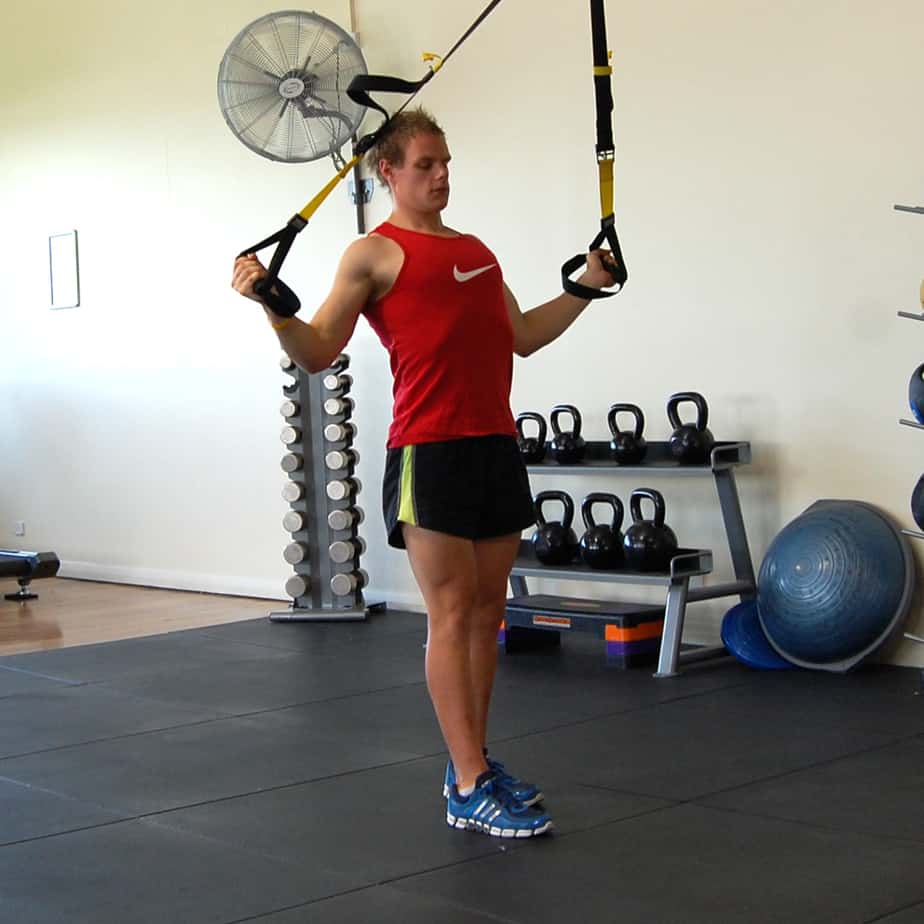
TRX for Rotator Cuff Tear
Rotator cuff tears are among the most common conditions affecting the shoulder. In 2010, close to two million people in the United States went to their doctors because of a rotator cuff problem. In this Ask the Doctor, Dr. Perkash addresses a question posed by a member of the TRX Community who was diagnosed with a possible rotator cuff tear.
Question:
In 2007, after working out three times a week with a personal trainer who emphasized heavy weight lifting, I developed severe shoulder pain and was diagnosed with a "possible" torn rotator cuff. After two cortisone injections in two years, I have been pain free. I have given up the weights for bands. Would TRX aggravate this condition, or are there specific exercises I could use for continuing rehab?
Answer:
The rotator cuff is a combination of four muscles in the shoulder: the supraspinatus, infraspinatus, subscapularis and teres minor. The function of the rotator cuff is to stabilize and move the shoulder joint, which is a ball (the humerus) and socket (the glenoid) joint. These muscles and others are responsible for movement of the entire shoulder girdle, which includes the shoulder blade (scapula) and the clavicle.
Injuries to the rotator cuff are quite common, both with aging and with exercise and activities. Athletes who perform overhead activities such as those participating in football, baseball, tennis, weightlifting, volleyball and water polo are particularly susceptible to rotator cuff injuries. The rotator cuff can be injured due to a strain injury or trauma, or it can become inflamed due to chronic overuse such as with swimming or other repetitive motions of the shoulder. With aging, degeneration of the joints in the shoulder or formation of bone spurs can predispose to rotator cuff injuries. Degenerative changes can also occur in the nearby acromioclavicular joint, which can also cause shoulder pain.
Diagnosis of rotator cuff injuries is usually clinical initially, but x-rays can show bone spurs and degenerative changes in the shoulder joints, and and MRI scan can reveal a potential rotator cuff tear. Treatment usually involves rest, ice, anti-inflammatory medications, physical therapy and rehabilitation exercises, cortisone injections and less commonly surgery to repair a significant rotator cuff tear. Small or partial tears can usually heal themselves with appropriate treatment, but full thickness tears usually do not heal and often require surgery to repair the rotator cuff.
In someone who has had complete resolution of symptoms of a "possible" tear, the prognosis is quite good long term with appropriate rehabilitation and preventative measures. Overhead activities with heavy weights such as military press place the shoulder in a relatively unstable position and should be performed with caution, or only light weights should be used. Strengthening of the rotator cuff and shoulder girdle musculature can markedly reduce the risk of injury in the future. If the shoulder pain symptoms have completely resolved, there may not be any specific restrictions that are necessary. Anyone with a prior injury to the rotator cuff should clarify with his physician whether he needs to follow any specific restrictions given his individual situation. Check with your physician whether you have any specific restrictions with regard to your shoulder condition.
The TRX Suspension Trainer is an excellent tool for strengthening the rotator cuff, improving functioning and performance and decreasing the likelihood of future injury. Want to find safe, effective exercises for your shoulder rehab? Take our quick assessment quiz to get a personalized training plan designed around your recovery needs. The following exercises are excellent for the ongoing rehabilitation of a previous rotator cuff injury and stabilize the shoulder girdle:
TAKE OUR TRAINING QUIZ
TRX Shoulder Series
TRX Swimmer Pull
TRX Biceps Curl
TRX Chest Press
TRX High Row
Another good exercise for shoulder stability is the TRX Serratus Slide. Again, it is important to take guidance from your physician and physical therapist regarding exercise selection for your specific situation.
For more on how TRX Suspension Training bodyweight exercise is a safe, scalable and effective solution for you or your patients, visit our Sports Medicine page.
NOTE: Any medical information in this blog is of a general nature and not a substitute for the advice of a medical professional. If you need medical advice, see a doctor.
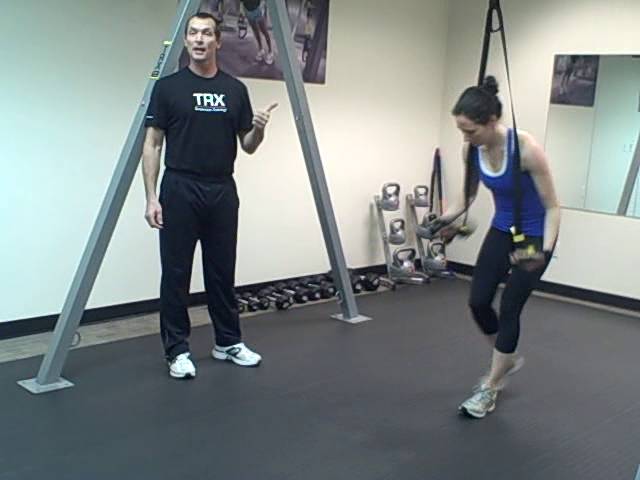
TRX for Osteoporosis
Osteoporosis is a disease affecting many millions of people around the world. In the US alone, this condition is a major health risk for 28 million Americans. One of our TRX Community members, Bart, recently wrote into Dr. Perkash asking whether the TRX Suspension Trainer could be incorporated into the treatment of osteoporosis. Below, you'll find the Q&A as well as a video we shot here at TRX HQ with our Director of Rehabilitation Brian Bettendorf (and Anne from our Education Dept), illustrating some of the TRX exercises Dr. Perkash recommends for individuals who have been diagnosed with this condition.
Question
Resistance training with TRX can absolutely be a valuable tool for those with osteoporosis, but let me explain how it fits into a bone health program. Want to find safe, effective exercises for managing osteoporosis? Take our quick assessment quiz to get a personalized training plan designed for bone health.
TAKE OUR TRAINING QUIZ
Traditional weight training with dumbbells and barbells is important because the direct loading helps stimulate bone remodeling. However, TRX can provide many unique benefits:
Answer
Osteoporosis-related fractures are a significant cause of disability in the elderly. Recent research has demonstrated that one of the best ways to combat osteoporosis is prevention. This can be achieved through a variety of recommended behaviors beginning early in life and continuing these behaviors throughout one’s life.
Proper nutrition, including adequate consumption of calcium, as well as regular physical activity and exercise contribute to improving bone mineral density. Bone has the ability to respond to exercise by becoming stronger and denser. Studies have shown that two main types of exercise are most important for building and maintaining bone mineral density: weight-bearing exercise that involves bones and muscles working against gravity, and resistance training that provides a force on bones provided by muscles and tendons, which leads to stronger bones.
With the TRX, you use your own bodyweight as resistance. This type of training results in increased tension on muscles and tendons, providing a force on bones that can lead to increased bone mineral density. Furthermore, any TRX exercise that is performed standing on one or both feet involves weight bearing and therefore can help with strengthening bones.
In the video above, you'll see three TRX exercises that can be substituted for exercises using dumbbells: TRX Chest Press, TRX Mid Row and TRX Overhead Squat. Some other TRX exercises you can do include the TRX Shoulder Series (I, Y, T Deltoid Fly), TRX Biceps Curl, TRX Triceps Press, TRX Push-up and many others.
The unique benefit of the TRX is the user is able to modfiy body angle and base of support to scale intensity across a continuum of low to high loads and stable to unstable positions. Furthermore, TRX exercises promote balance, core strengthening, gait and performance and can decrease the risk of falling in the elderly, reducing the risk of osteoporosis-related fractures. (Studies are currently being done using the TRX in fall prevention.) For all of these reasons, the TRX is a great substitute for many exercises that use traditional dumbbells and barbells.
The important point is to adhere to a comprehensive exercise program throughout one’s lifetime to encourage overall improved bone density and strength.
Have a question for the TRX Doctor? Email the Doc. For more on how TRX Suspension Training bodyweight exercise is a safe, scalable and effective solution for you or your patients, visit our Sports Medicine page.
NOTE: Any medical information in this blog is of a general nature and not a substitute for the advice of a medical professional. If you need medical advice, see a doctor.
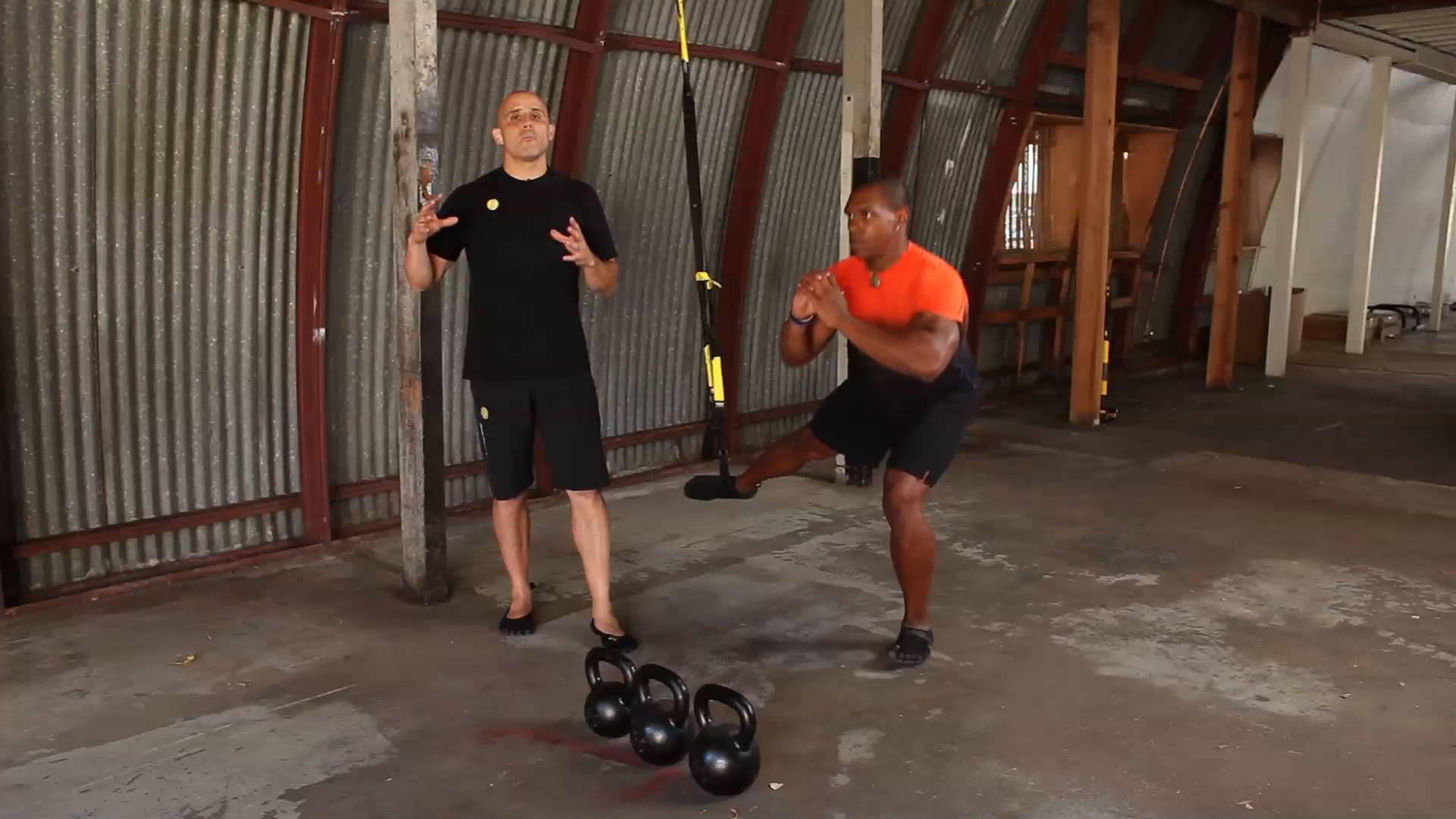
TRX for Power
FROM THE VAULT: We think the TRX kills it at keeping anyone in great shape. Take our quick workout quiz to get customized combinations of TRX and kettlebell exercises for your goals. But we're often asked how to integrate other fitness tools into your TRX workouts. Here, TRX Head of Human Performance Chris Frankel shows how pairing the TRX with kettlebells will help you build strength and explosive power.
TAKE OUR TRAINING QUIZ
In this video, Chris starts with an easy warm up using a foundational movement, the Kettlebell Swing, and then combines the kettlebell with three TRX exercises (TRX Lunge, TRX Side Lunge and TRX Power Pull) to create some hard-hitting hybrid movements that challenge your stability and flexibility but also your lower body strength and power. Chris throws some rotational work into the mix, which is a big focus in just about any field and court sport, and adds progressions of each movement so you can work at your current fitness level… and beyond. Using the TRX with kettlebells allows you to train several modalities at once (flexibility, mobility, strength, power, rotation, etc), opening up new performance opportunities. These moves are guaranteed to take things up a notch in your training!
For more great kettlebell/TRX exercises, check out our TRX Kettlebell: Iron Circuit Conditioning DVD.
As the resident TRX Professor, Chris Frankel draws from over 25 years of experience as a strength and conditioning coach. He earned an MS in Exercise Physiology from the University of New Mexico, where he is currently completing his doctorate in Exercise Science. Before taking the position of Director of Programming at TRX, Chris was an instructor in the Department of Health, Exercise and Sport Sciences at the University of New Mexico.
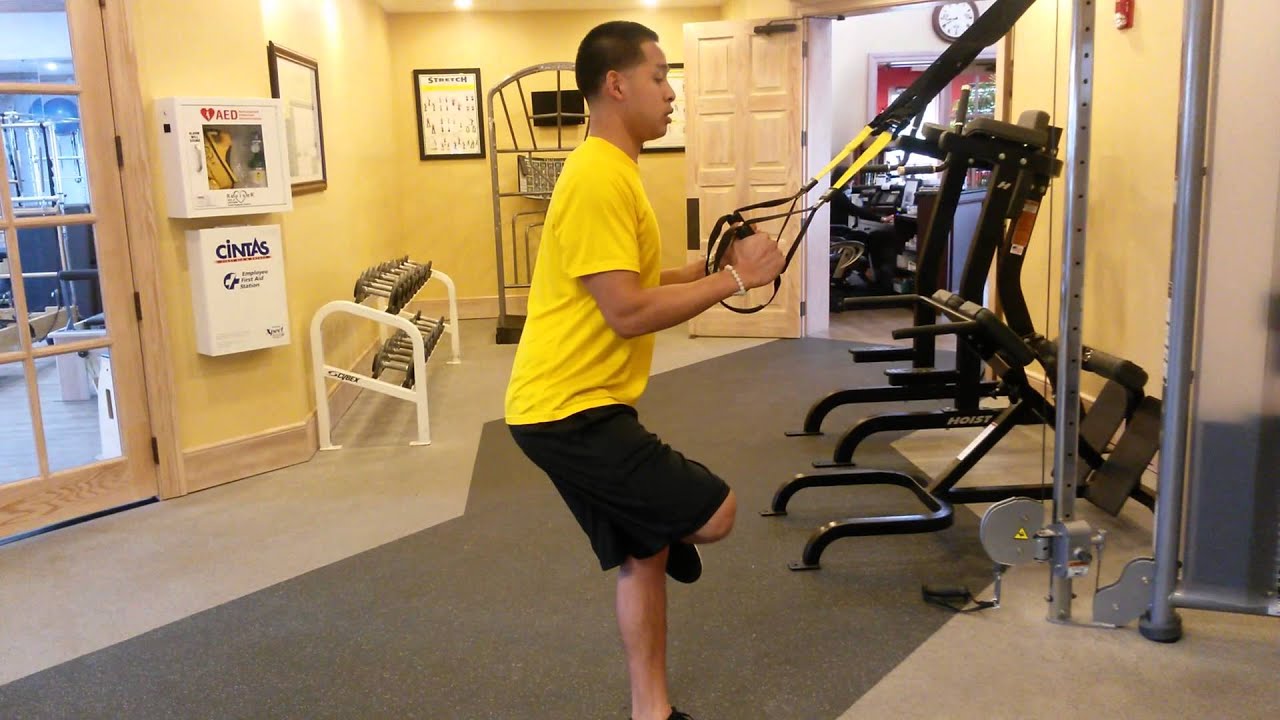
TRX for Piriformis Syndrome
If you or your client has ever experienced piriformis syndrome, you know it’s a pain in the butt–literally! Runners, cyclists, and other athletes engaging in forward-moving activities are particularly susceptible to developing piriformis syndrome, especially if they do not engage in stretching and strengthening exercises. Here, Dr. Perkash addresses a question posed by a member of the TRX Community on whether the TRX Suspension Trainer can be used in the rehab of piriformis syndrome.
Question:
I have been in physical therapy for the past month for piriformis syndrome. I had to stop training for my marathon this fall due to this injury, which was brought on by overtraining. I have been doing several glute-specific exercises in PT to help strengthen the muscles that are weak. In addition to strengthening my weak glutes, I have been icing, stretching and using my TRX Suspension Trainer regularly to supplement rehab. Will TRX exercises exacerbate my piriformis syndrome? Can you recommend any specific exercises that will help my rehab and recovery?
Answer:
The piriformis muscle is a muscle deep within the gluteus region that is thought to irritate or compress the adjacent sciatic nerve, resulting in buttock and possibly leg pain, numbness or tingling, otherwise known as piriformis syndrome.
Potential causes of piriformis syndrome also remain controversial. Overuse injuries such as with running, bicycling or rowing or direct trauma to the gluteus region are thought to be potential causes of piriformis syndrome. It has been theorized that a combination of weakness in the hip abductors/gluteus medius muscles combined with tight hip adductors can lead to the condition.
Treatment for piriformis syndrome involves rest, modalities such as application of heat/ice, stretching and strengthening exercises for the gluteus and core musculature, oral anti-inflammatory medications and possible local steroid injections. Formal physical therapy is often employed with the use of additional modalities such as ultrasound and electrical stimulation, as well as a directed home exercise program. The goal is to stretch the gluteus musculature, the hamstrings and piriformis muscle itself, while strengthening the hip abductor and core musculature to improve muscle imbalances.
Any rehabilitation program after injury should be performed under the guidance of a physician and physical therapist. The Suspension Trainer can be used in the rehabilitation of piriformis syndrome with the following exercises:
TRX Step Side Lunge
TRX Step Back Lunge
TRX Balance Lunge
TRX Crossing Balance Lunge
TRX Hamstring Curl
TRX Hamstring Runner
TRX Plank
TRX Side Plank (with or without Hip Drop)
TRX Crunch
TRX Oblique Crunch
TRX Squat
TRX Single Leg Squat
TRX Low Row
TRX Overhead Back Extension
TRX Standing or Kneeling Roll Out
TRX Hip Hinge (Wide Stance or Single Leg)
For more on how TRX Suspension Training bodyweight exercise is a safe, scalable and effective solution for you or your patients. Want to find exercises that match your medical needs? Take our quick assessment quiz to get personalized recommendations based on your condition. Visit our Sports Medicine page and download our White Paper. If you have a question for Dr. Perkash, email askthedoc@trxtraining.com.
TAKE OUR TRAINING QUIZ
NOTE: Any medical information in this blog is of a general nature and not a substitute for the advice of a medical professional. If you need medical advice, see a doctor.
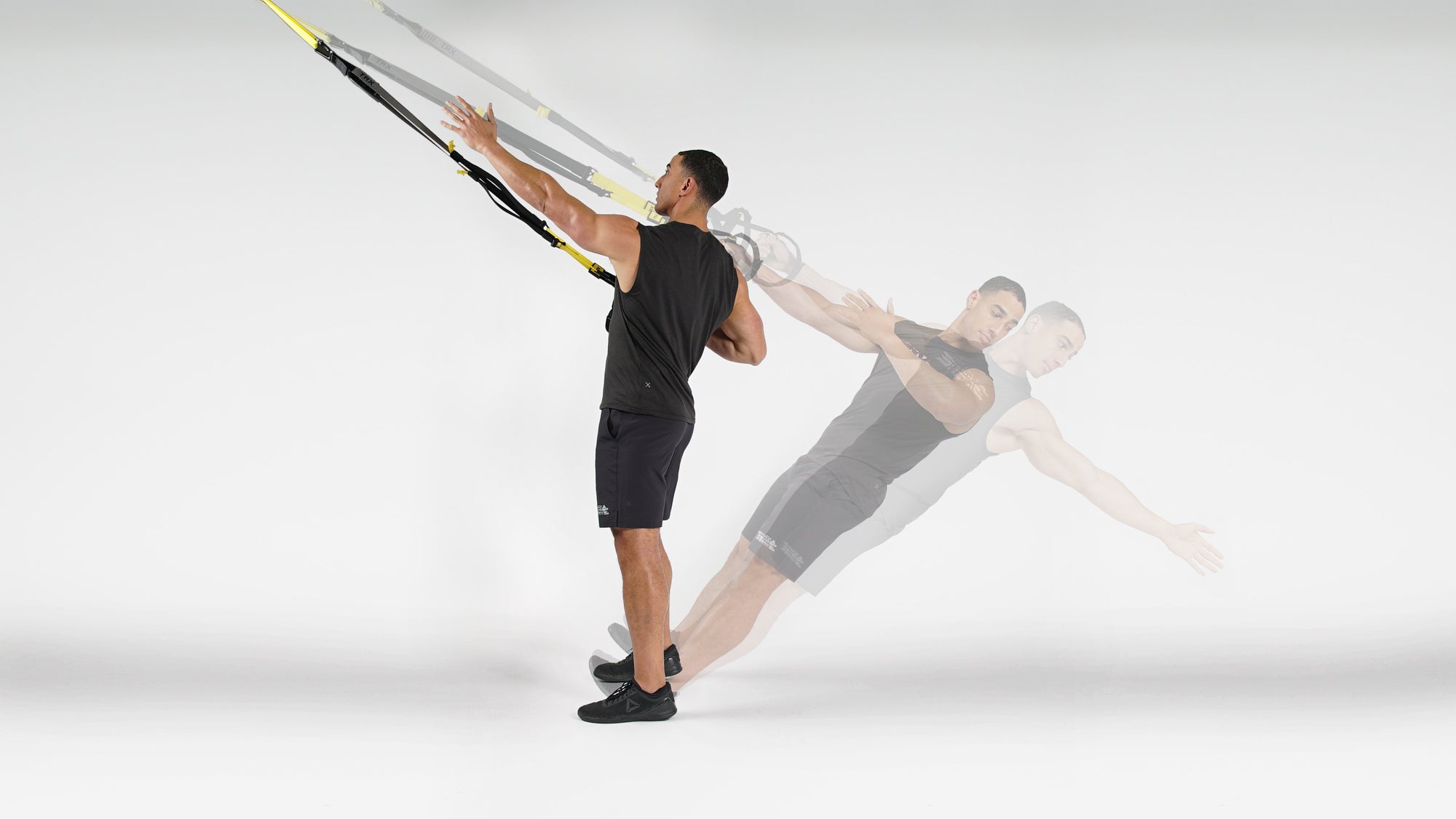
TRX for Movement Disorders
The stats are startling: where you live in the US may increase your susceptibility of developing Parkinson’s disease. Results from a recent study have revealed that Parkinson’s is more prevalent in individuals who reside in the Midwest and the Northeast, with environmental factors a likely common cause. But don't consider a new ZIP code just yet. There is a silver lining: if you or someone near and dear to you has been diagnosed with a movement disorder, the TRX may assist in your rehabilitation process. Here, Dr. Perkash addresses a question from Dale, a TRX Community member with Parkinson's disease who wants to incorporate the TRX into his training protocol.
Question:
I have Parkinson's disease, and in January of this year, I had deep brain surgery at UCSF's Medical Center. I am 55 years old and served for over 16 years as a federal special agent as a tactical athlete. You name the task force, and I've been detailed to it, from the Lower Manhattan FBI/NYPD Command Post (Ground Zero) to San Francisco's Multi-Agency Russian Organized Gang Task Force. With that all said and done, I wanted to inquire as to your vision of a workout routine using TRX for someone who has a movement disorder.
Answer:
Patients with movement disorders such as Parkinson’s disease cover a wide spectrum in terms of functioning and limitations. Patients with mild or early Parkinson’s may have virtually no limitations, while those who are severely afflicted may have significant limitations and require substantial assistance with their activities of daily living (ADLs).
Some patients like you are eligible for procedures such as deep brain surgery to try to improve mobility and functioning. Others may receive some benefit from medications and physical therapy, including assistive devices such as canes, walkers or wheelchairs. Most patients do benefit, to one degree or another, from some type of muscular re-education program including gait/balance training and endurance exercises for general well being and improved functioning.
Depending upon the degree of limitations, training and motivation, most patients can improve their functioning by participating in a rehabilitation program to maximize function. Typically, patients attend formal rehabilitation through a physical therapist for a specified period of time in order to learn an independent or family-assisted home/gym exercise program they will do daily or at least several times per week to maximize their performance in ADLs, including walking, bathing, grooming, eating and other activities. The nature of this type of exercise program varies depending upon the person’s condition, limitations, prognosis and other medical conditions.
It is imperative to work with a physician and physical therapist to develop an individually tailored home exercise program, which should be performed regularly to maximize function. The TRX is currently being used for a variety of purposes to improve gait, balance, strength and endurance in individuals with movement disorders. A specific TRX exercise program should be initiated under medical supervision with a physical therapist and can be encouraged subsequently by a knowledgeable trainer or training partner.
I would encourage you to pursue your rehabilitation goals with your physician and physical therapist. Want to find TRX exercises that complement your physical therapy program? Take our quick assessment quiz to get a personalized plan that aligns with your recovery goals. Many therapists are using the TRX as an active part of their rehabilitation program. Indeed, techniques for rehabilitation using the TRX are being refined and adapted for multiple medical conditions and will likely continue to be even more useful in the future as their applications expand over time.
TAKE OUR TRAINING QUIZ
Have a question, email the TRX Doctor? For more on how TRX Suspension Training bodyweight exercise is a safe, scalable and effective solution for you or your patients, visit our Sports Medicine page.
NOTE: Any medical information in this blog is of a general nature and not a substitute for the advice of a medical professional. If you need medical advice, see a doctor.
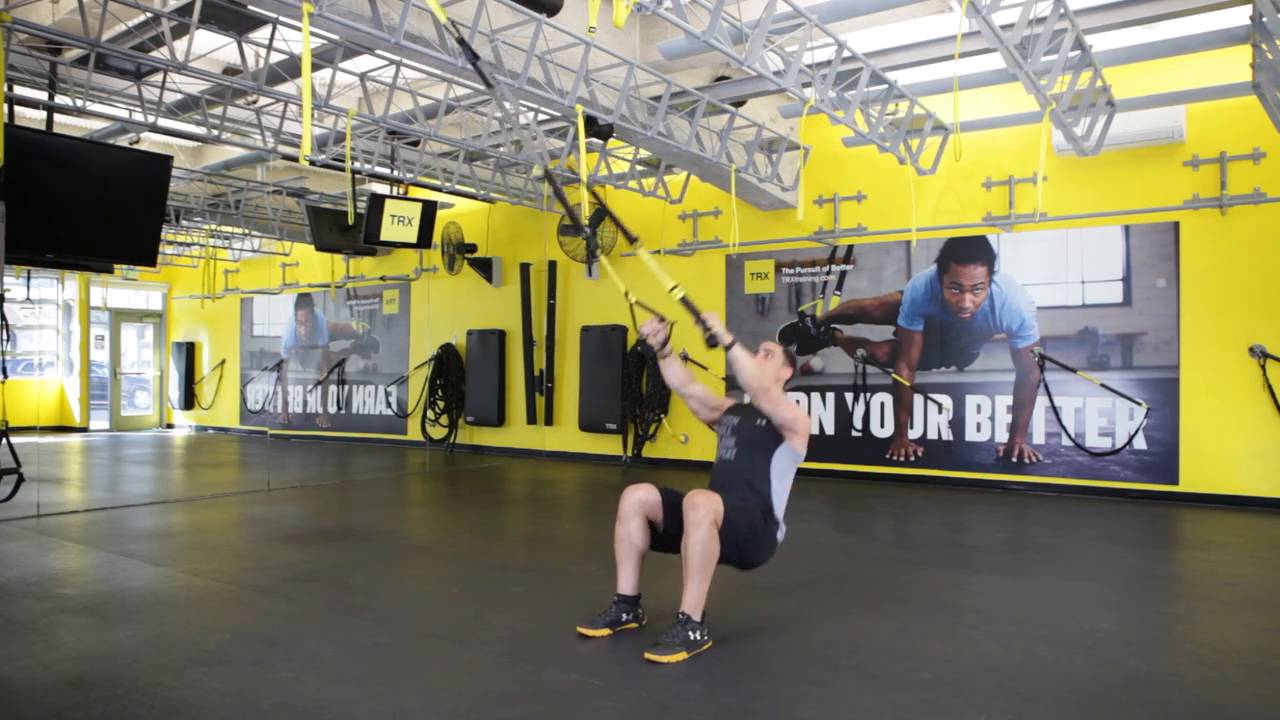
TRX for MMA
The TRX® Suspension Trainer™ allows you to MAKE YOUR BODY YOUR MACHINE by taking bodyweight exercise to almost limitless possibilities for strength, mobility, power and endurance. Want to find the perfect MMA-specific exercises for your level? Take our quick assessment quiz to get a personalized training plan that enhances your fighting performance. The design of the Suspension Trainer ensures you are loading movements properly, using stabilizer muscles along with challenging your core strength and balance for a workout like no other. With the physical demands of an MMA fighter requiring strength, precision, mobility and power, training with TRX makes your entire body strong, balanced and durable, so you can withstand the physical demands needed for MMA with much less potential for injury.
TAKE OUR TRAINING QUIZ
Here are some effective moves that I use in my own MMA training:
TRX Single Leg Chest Press
TRX Squat to Y-Fly
TRX Atomic Push Up
TRX Hamstring Curl to Hip Press
What I love most about these exercises is that they are great for building core strength and balance, two attributes that are extremely important when training in MMA. Not only that, this list hits the major muscle groups of the human body targeting both the upper and lower body, creating what is referred to as peripheral heart action (PHA). PHA has been identified to keep your heart rate up during strength-based exercise, while torching calories with every movement. A win-win right there!
If you’re looking for an exercise that simulates an MMA move, give the TRX Hamstring Curl to Hip Press combo a try. This exercise simulates the muscular function for Jiu Jitsu practitioners of the triangle and armbar. The single anchor point and limited slip locking loop gives you immediate feedback on the quality of your movement and is the perfect combination of instability for balance and coordination work plus enough stability to build high levels of strength. I’ve found that by slowing this down or any of the above exercises down will uncover muscular imbalances immediately.
By, Rob McCullough
Senior MMA Director & International Master Trainer for UFC Gym & TRX Instructor
My name is Rob McCullough my nickname in the MMA world is “Razor Rob”. I am the UFC GYM Corp. Senior MMA Director and International Master Trainer. In my former career I also was the WEC lightweight champion and International Muay Thai Kickboxing Champion. Other accolades include Striking coach on season 11 Team Ortiz and Season 14 Team Bisping on the reality TV show The Ultimate Fighter. Currently a NASM CPT, MMACS, YES, Escape Master Trainer; Bulgarian Bags, kettlebells, American Red Cross Instructor, Master Trainer TRX®.
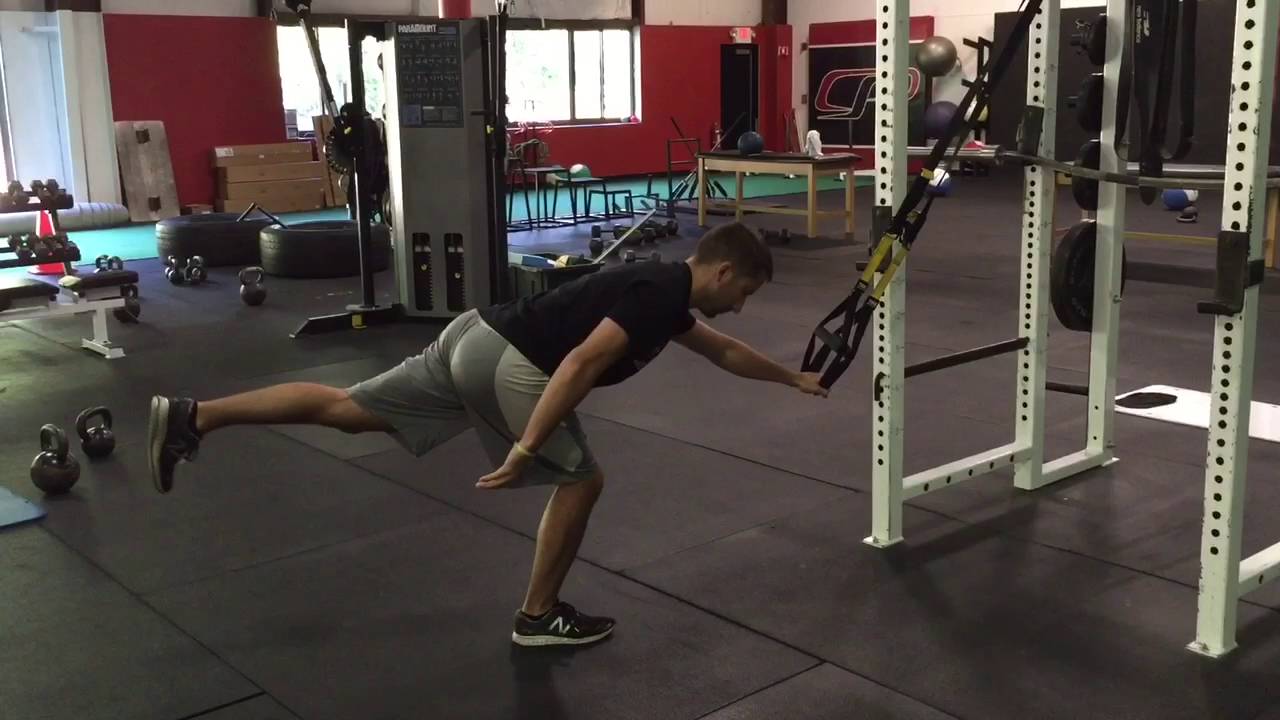
TRX for Lower Extremity Injury
Dr. Jennifer Reiner incorporates the TRX Suspension Trainer into her sports rehabilitation services at Todd Durkin’s facility, Fitness Quest 10 in San Diego. Looking for exercises tailored to your recovery needs? Take our quick assessment quiz to receive personalized rehabilitation recommendations.
TAKE OUR TRAINING QUIZ
Here she demonstrates her top five exercises for individuals rehabbing a lower extremity injury.
1. TRX Single Leg Squat
Begin with the Suspension Trainer in the mid length position facing the anchor point. Elbows should be under the shoulders and the stance leg should be centered to the anchor point. You may use the opposite heel on the ground for added support.
Lower the hips down and back, maintaining your weight over the stance leg with your chest tall.
Return by driving through the mid foot and heel back to your starting position.
2. TRX Balance Lunge
Maintain your weight on the original stance leg from the TRX Single Leg Squat. Elbows will remain under your shoulders to start.
Drive the opposite leg back, lowering the knee towards the ground. The knee should hover above the ground without the foot touching.
Keeping your chest tall, drive through the mid foot and heel of the front leg, returning to your starting position.
3. TRX Step Side Lunge
Continue to challenge the same leg from the previous two exercises. Begin with the elbows under the shoulders and feet together.
Step to the side moving the same leg from the TRX Single Leg Squat and TRX Balance Lunge that was your stance leg. Lower the hips toward the ground, keeping the opposite leg straight.
Once at the bottom of the lateral lunge, push off the mid foot and heel to return to your startng position.
4. TRX Lunge
Begin with the Suspension Trainer at the mid calf position in single handle mode facing away from the anchor point. Be sure the suspended foot is centered to the anchor point with your shoulders over your hips. For added stability, place both arms directly in front overlapping while providing an isometric contraction to engage the core.
Drive the suspended knee back, lowering your hips until the front knee is at 90 degrees.
Pushing off the front foot, drive through the mid foot and heel as you extend the hip.
5. TRX Abducted Lunge
Maintain the same foot in the Suspension Trainer and turn to face sideways to your anchor point. Again for stability, create tension through the torso by extending the arms in front with an isometric contraction.
Drive suspended leg to the side and lower the hips until the front knee reaches 90 degrees.
Pushing through the mid foot and heel of the stance leg, return to your starting position.
The first three exercises may be used in succession to challenge stability, strength and mobility. Each exercise progressively gets easier, in terms of the muscle activation and stability required, allowing the patient/client to continue exercising as the lower extremity begins to fatigue. The final two exercises are for the advanced client and require more strength and motor control. Depending on your goals for your client, you may perform these exercises for time or repetitions.
Dr. Jennifer Reiner is the chiropractor for Water and Sports Physical Therapy providing sports rehabilitation services Todd Durkin’s facility, Fitness Quest 10. She is also a TRX Sports Medicine instructor. Dr. Jenn obtained a Bachelor's of Science Degree in Exercise Physiology from the University of Florida and went on to pursue a Doctor of Chiropractic degree from Palmer College of Chiropractic West. As a member of the Palmer West Sports Council, Dr. Reiner focused her studies on sports injuries and rehabilitation.
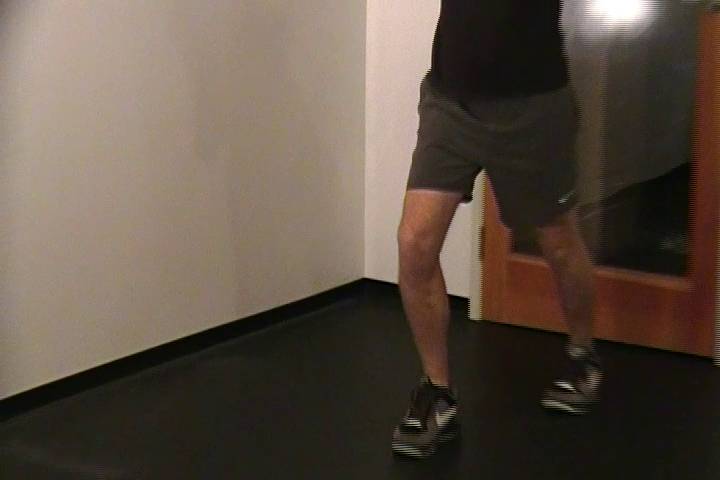
TRX for Knee Pain
In this video, corrective exercise specialist Justin Price shows us how to use the TRX Suspension Trainer to alleviate knee pain. By stretching (both statically and dynamically) and strengthening the supporting muscles in the knee complex and mobilizing the hip and ankle complexes. Want to find safe, effective exercises for your knee issues? Take our quick assessment quiz to get a personalized training plan designed around knee health.
TAKE OUR TRAINING QUIZ
To purchase the TRX Biomechanics: Healthy Back DVD, click here.
Justin Price, MA, is the creator of The BioMechanics Method (www.thebiomechanicsmethod.com), which provides exercise solutions for people in chronic pain. He is an IDEA Personal Trainer of the Year and an educator for the American Council on Exercise, PTontheNET, PTA Global and the National Strength and Conditioning Association.
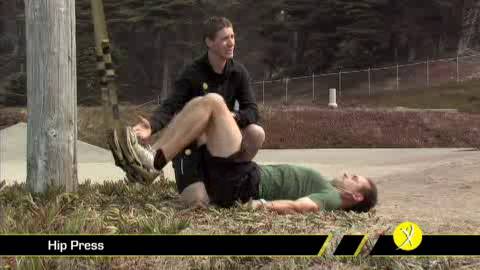
TRX for Injury Rehab
Even the best preventative measures can’t ensure you won’t end up on the DL at some point. Lucky for you, TRX Suspension Training can be highly beneficial at rehabbing injuries.
In his monthly Ask the Doctor blog posts, Dr. Rajan Perkash has covered several upper extremity injuries including Tennis Elbow, Elbow Tendinosis and Shoulder Dislocation. But the TRX is just as effective at addressing injuries incurred below the belt. Suspension Training and/or instability training has been found to reduce the risk of:
Lower limb injuries by 39%
Acute knee injuries by 54%
ACL injuries by 88%
Ankle sprain by 50%
By leveraging the user's own bodyweight and manipulating the level of stability (i.e., your base of support), you can scale the intensity of any exercise on the Suspension Trainer. Want to find safe, effective exercises for your injury recovery? Take our quick assessment quiz.
TAKE OUR TRAINING QUIZ
Specifically with lower extremity rehab, the TRX can be used as a de-weighting device to allow partial weight-bearing exercise in the early phases of rehab or as a safety device as you progress to full weight-bearing exercise. Here, TRX Director of Rehabilitation Brian Bettendorf gives you his top TRX exercises for two all-too-common lower body injuries.
ACL Repair or Replacement
TRX Hip Press (above) - Increases strength and endurance to paraspinals, glutes and hamstrings. Retrains diminished motor control of glutes typical after injury.
TRX Sprinter Start - Increases hip, knee and ankle strength. Integrates triple extension. Facilitates return of full knee range of motion and challenges single leg balance.
TRX Single Leg Squat - Builds strength in the lower body while challenging the glutes to control femoral internal rotation.
Ankle Sprain
TRX Step Side Lunge - Facilitates hip, knee and ankle mobility by unloading exercise.
TRX Lunge - Increases hip and knee strength. Challenges balance and stability.
TRX Skaters - Increases hip, knee and ankle power. Introduces a controlled lateral challenge to the ankles.
But before you grab your TRX and go to town, it is highly recommended you consult a health care professional and get clearance to begin this or any exercise program. To learn more about the science of Suspension Training, visit our Sports Medicine page.
